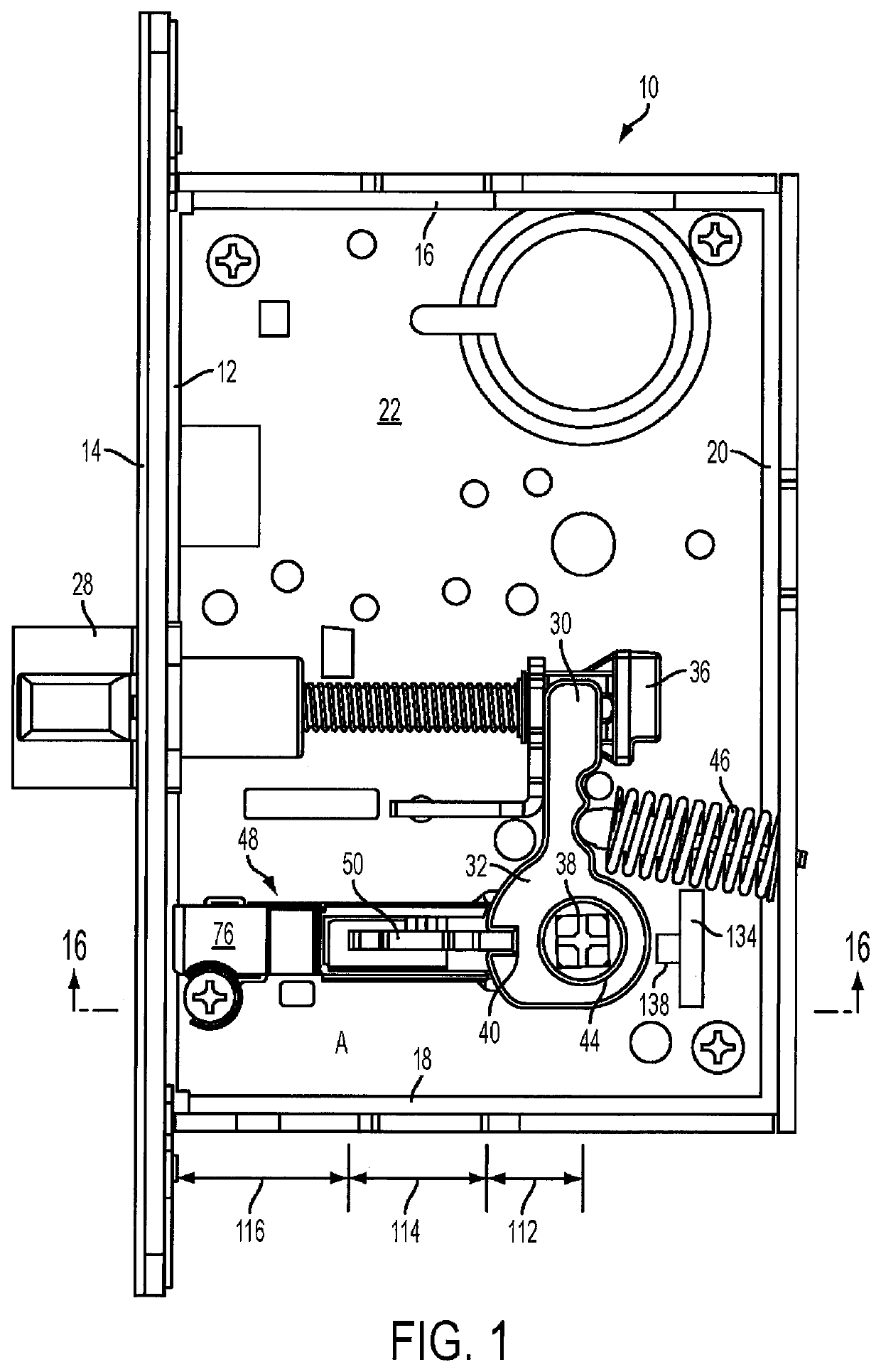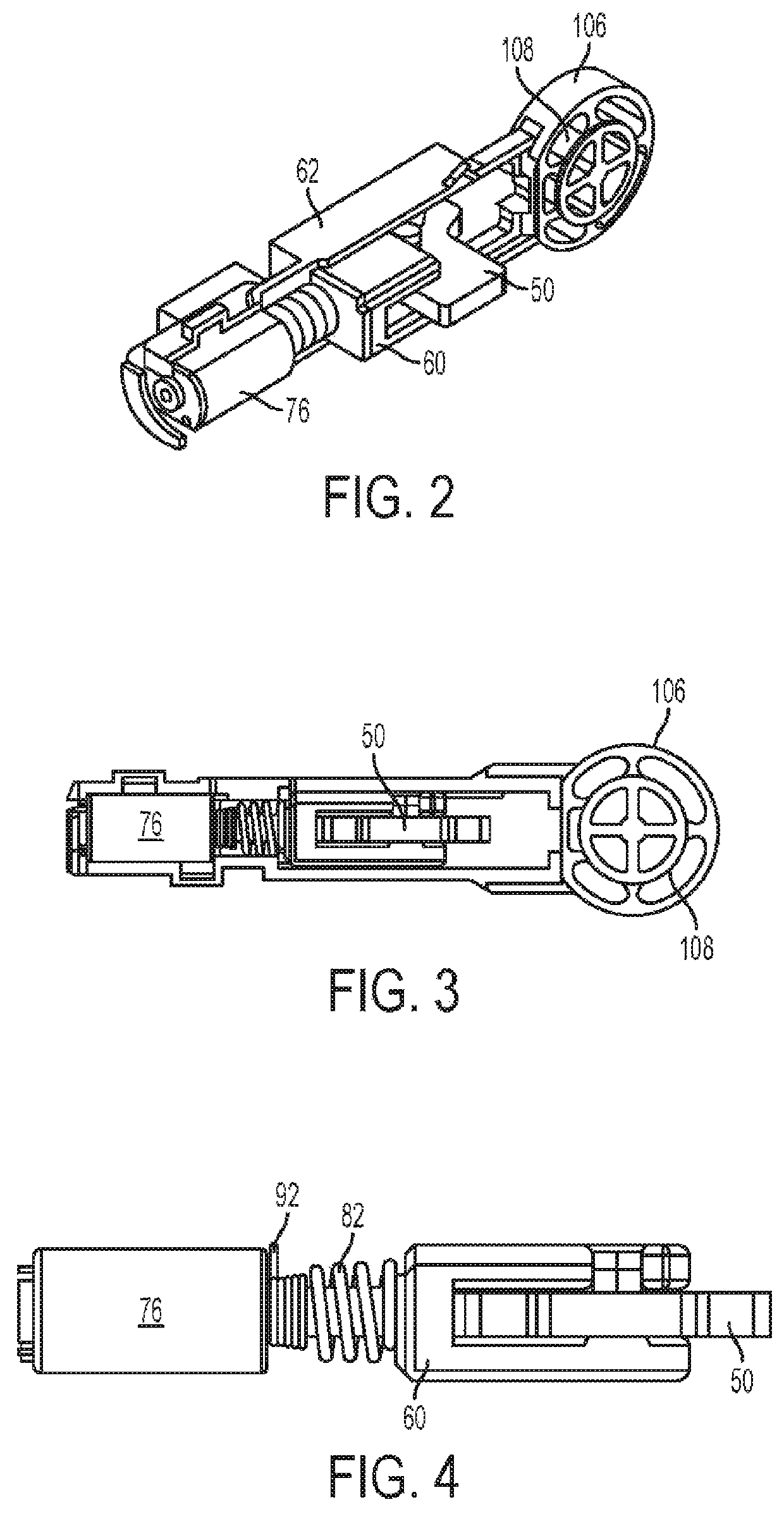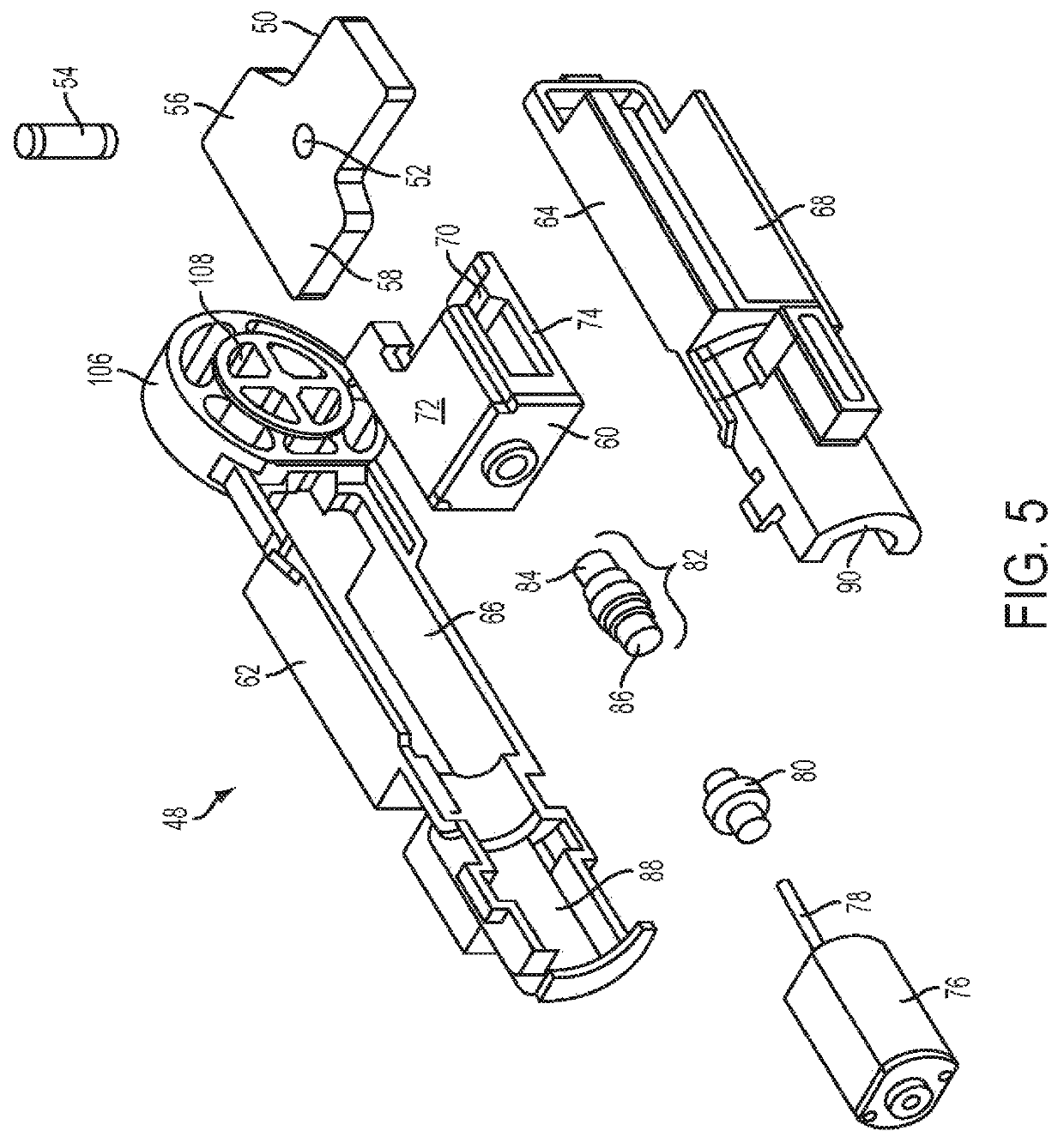Inline motorized lock drive for solenoid replacement
a solenoid replacement and motorized lock technology, applied in the field of electromechanical locks, can solve the problems of labor-intensive and costly installation and interconnection of sensors during manufacturing, and the inside cannot be prevented from exiting the secure area, and achieves the effect of reducing torque and power, reliably operating the drive, and low voltage very efficien
- Summary
- Abstract
- Description
- Claims
- Application Information
AI Technical Summary
Benefits of technology
Problems solved by technology
Method used
Image
Examples
Embodiment Construction
)
In describing the preferred embodiment of the present invention, reference will be made herein to FIGS. 1-18 of the drawings in which like numerals refer to like features of the invention.
Referring to FIG. 1, a mortise lock 10 includes a front wall 12, preferably covered by a decorative face plate 14, a top wall 16, a bottom wall 18, a back wall 20 and a left side wall 22. The five walls and plates 12, 16, 18, 20 and 22 are preferably formed from a single sheet with the surrounding walls being bent upwards to form an open rectangular body for the lock housing. The lock body holds the internal lock components within it and the body is then enclosed with a removable cover plate 24 on the right side to form the final wall of the complete lock housing.
The cover plate 24 forming the right side of the lock housing has been removed in FIG. 1 to show various internal components of the lock, including the location of the inline motorized lock drive 26 of the present invention. Various other...
PUM
 Login to View More
Login to View More Abstract
Description
Claims
Application Information
 Login to View More
Login to View More - R&D
- Intellectual Property
- Life Sciences
- Materials
- Tech Scout
- Unparalleled Data Quality
- Higher Quality Content
- 60% Fewer Hallucinations
Browse by: Latest US Patents, China's latest patents, Technical Efficacy Thesaurus, Application Domain, Technology Topic, Popular Technical Reports.
© 2025 PatSnap. All rights reserved.Legal|Privacy policy|Modern Slavery Act Transparency Statement|Sitemap|About US| Contact US: help@patsnap.com



